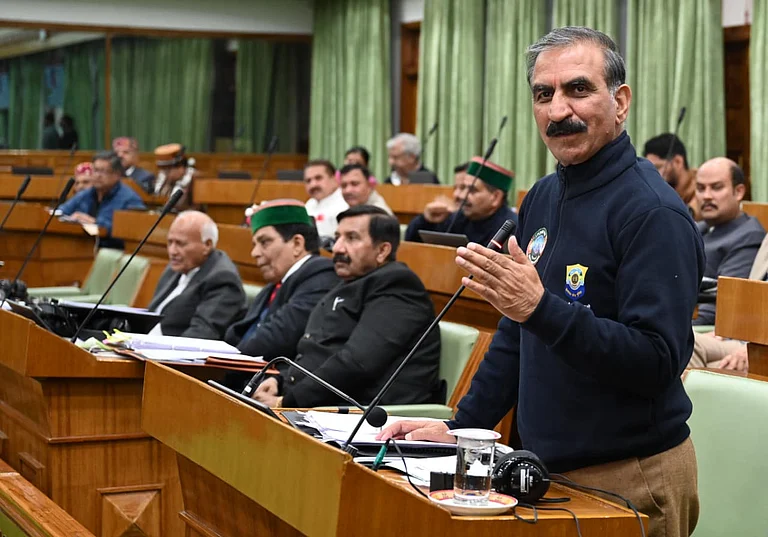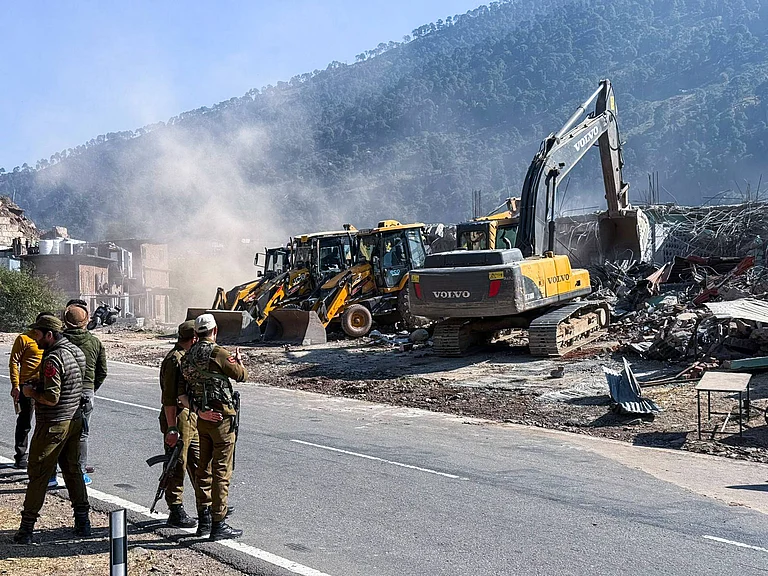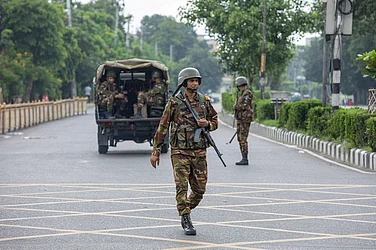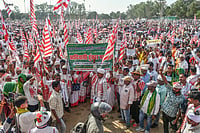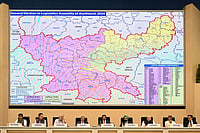This year in Jharkhand, the monsoon has landed on time, prompting hopes of good rainfall in July. But scientist Rajan Chaudhari is cautiously sceptical. He tells us that Jharkhand has often seen levels of precipitation that dipped far below expectations.
Chaudhari works as an agrometeorologist at the Krishi Vigyan Kendra, Khunti. Mentioning Khunti as an example, he says that it has seen only 60 mm of rain till June, against the normal range of 190-200 mm. Statewide, there has been 65 per cent less rainfall till the end of June.
Jharkhand, in recent years, has borne the brunt of climate change, caused among other things by indiscriminate mining, reckless cutting of trees, and local disturbances such as an increase in the carbon dioxide levels. Although the state receives rains every year, more or less, they are not timely, giving rise to droughts again and again.
The state of Jharkhand was formed in November 2000. It has faced droughts in 15 of the 23 years since. “As far as I can see, there have been many climatic changes in the state in the last four years. Temperatures have risen and there have been several deviations from normal rainfall. The arrival of the monsoon has shifted by 15-20 days. In the times to come, we will see these things get much worse,” says Chaudhari.
Here is an overview of the state’s rainfall amounts over the past 70 years. From 1951 to 2000, the normal rainfall was 1091.9 mm, which decreased to 1054.7 mm in the years between 1961 and 2010. Over the 1971-2020 period, it decreased further to 1022.9 mm. The trouble is, even with these reductions, it simply is not raining on time.
Owing to the frequent droughts, Harikant Mahli decided not to cultivate paddy even if there was good rainfall this year. The quinquagenarian, who resides in Lohardaga’s Juriya Barka Toli, has about one acre of land. Last year, he took a huge loss in paddy cultivation. He tells Outlook, “If it rained on time, we would get a yield of five quintals, which was enough to sustain us through the year. But last time, we could only manage a single quintal of paddy. So, I have decided not to do farming any more.” Harikant and his wife now support their family of six by doing wage labour.
There are 24 districts in Jharkhand, which are further divided into 260 blocks. As per the 2011 census, 65 per cent of the rural population here is involved in agriculture. The state has about 38 lakh hectares of land deemed suitable for cultivation, but paddy can be sown on only 22.38 lakh hectares of them. Further, 92 per cent of this land is dependent on rain for irrigation.
Harikant says that his fellow villagers are shifting to other crops to escape the losses caused by the frequent droughts. In general, the farmers of Jharkhand are moving away from kharif crop cultivation to vegetable farming. The vegetables grown in the state are sent to Bihar, Uttar Pradesh, and Bengal.
Abdul Majid Ansari, a scientist at the Birsa Agricultural University, Ranchi, tells us: “Look, if you have land where paddy is cultivated, then no matter how severe the drought, you cannot grow any crop on it till October, because if it rains even once, there will be waterlogging and the crop will be ruined. But if it is number-three and tand land, you can definitely grow vegetables or other crops on it.”
More and more people are growing vegetables here because their yield per acre is higher than other crops and the income is also better. The demand for vegetables in the plains spikes during the rainy season. These are the reasons why people are shifting from coarse cereals like Kodo, Madua, Urad and Arhar to vegetable farming, explains Ansari.
There is a paucity of irrigation facilities in Jharkhand. This encourages single-crop farming, with the main crop being paddy. But, given the geography of the state, even paddy cultivation faces additional challenges. The terrain is hilly and the fields are uneven. The very low land here is called number-one land. The fields above these are number two and number three respectively. The fields further above these three are called tand. Eighty per cent of the cultivable land in Jharkhand is of the types number two and number three. This land does not retain much rainwater.
Environmental experts mention another reason for the high incidence of droughts in Jharkhand. In recent years, the neighbouring states of Bihar and Uttar Pradesh have received far less rainfall than Jharkhand, but they have not experienced severe droughts like Jharkhand. Environmentalist Dr. Daya Shankar Srivastava tells Outlook, “The reason why Bihar and UP do not share the plight of Jharkhand even with below-normal levels of rainfall is their Gangetic soil, with its high water-retention capacity. Jharkhand, in contrast, has sandy and rocky soil.”
However, Srivastava adds that Jharkhand was not always drought-prone to such an extent. Large-scale deforestation has exacerbated the situation and turned droughts into a regular occurrence.
The impact of droughts on the economy and the lives of the people in Jharkhand is far-reaching. The people are forced into outward migration, with the numbers going up year after year. According to the Economic Survey 2022-23, about 33,16,789 farmers were affected by droughts. Although the state does not have any exact figures on the number of people who have migrated due to droughts, during the Covid-19 pandemic, the government of Jharkhand brought back more than one million of its workers who were stuck in other states.
Women in Jharkhand, especially tribal women, suffer more from droughts than do men. Jharkhand may be the richest state in terms of mineral wealth, but the benefits of those riches have not reached its tribal-indigenous people. The frequent droughts, combined with the lack of employment opportunities in the mineral factories, force a large number of men to migrate to places like Delhi, Mumbai, and Haryana in search of work. These men leave behind them women who, apart from looking after their households, also have to tend to the farming.
(Translated by Kaushika Draavid)







.jpg?w=801&auto=format%2Ccompress&fit=max&format=webp&dpr=1.0)


